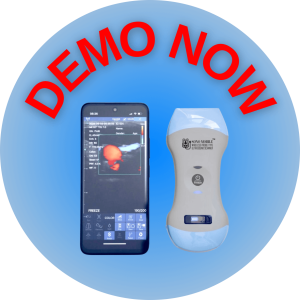Mobile ultrasound offers invaluable assistance to Emergency Medical Services (EMS) by providing rapid diagnostic capabilities and enhancing patient care in prehospital settings. Here’s how mobile ultrasound helps EMS:
- Early Diagnosis and Triage: EMS personnel can use mobile ultrasound to quickly assess and triage patients with critical conditions such as trauma, cardiac arrest, or respiratory distress, enabling timely interventions.
- Focused Assessment: Mobile Ultrasound allows for focused assessment in specific emergencies, such as identifying free fluid in the abdomen in trauma patients (eFAST exam) or evaluating for pneumothorax in patients with chest trauma.
- Cardiac Evaluation: EMS providers can perform basic cardiac ultrasound to assess for pericardial effusion, cardiac activity, and gross ventricular function in patients with cardiac arrest or suspected cardiac emergencies.
- Lung Ultrasound: Mobile Ultrasound aids in the diagnosis of conditions like pneumothorax, pleural effusion, and pulmonary edema, guiding respiratory management and ventilator settings in critically ill patients.
- Vascular Access: Ultrasound-guided vascular access improves the success rate and reduces complications when establishing IV access or performing intraosseous needle insertion in patients with difficult venous access.
- **Monitoring During Transport**: EMS teams can use mobile ultrasound to monitor patients during transport, detecting changes in cardiac function, assessing for complications, and guiding treatment decisions en route to the hospital.
- Telemedicine Integration: Mobile Ultrasound images can be transmitted in real-time to receiving hospitals or telemedicine providers, enabling remote consultations and advanced preparation for patient arrival.
- Prehospital Diagnosis and Intervention: Ultrasound aids in diagnosing conditions such as abdominal aortic aneurysm, ectopic pregnancy, or acute appendicitis, facilitating appropriate prehospital interventions and early notification to receiving facilities.
- Training and Education: Mobile ultrasound serves as a valuable educational tool for EMS providers, allowing them to develop skills in ultrasound-guided procedures and diagnostic techniques.
- Improved Triage Decisions: Mobile Ultrasound findings can help EMS personnel make more informed triage decisions, prioritizing patients based on severity of illness or injury and directing them to appropriate levels of care.
- Enhanced Communication with Receiving Facilities: Transmitting ultrasound images to receiving hospitals provides critical information to emergency department staff, enabling them to prepare resources and personnel for incoming patients.
In summary, mobile ultrasound enhances the capabilities of EMS by enabling rapid diagnosis, guiding interventions, and improving communication with receiving facilities, ultimately leading to better outcomes for patients in prehospital settings.



